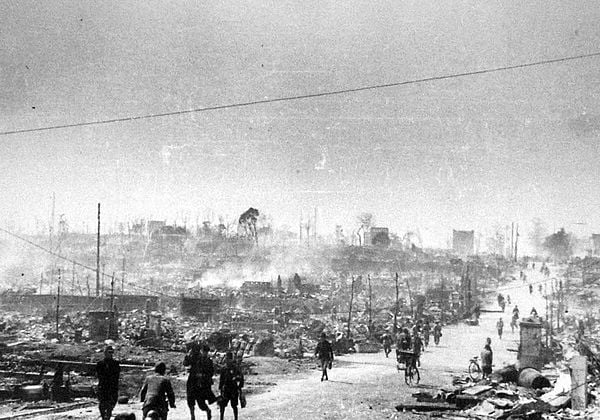In the mid-1900s, there was a destructive pre-battle between countries of the United States and Japan which led America to raid Japan with the most destructive strategic attack. But what happened in Operation Meetinghouse?
Operation Meetinghouse was the code name used by the United States Army Air Forces for the deadliest air raid and bombing attack in human history on March 10, 1945, killing over 100,000 people and destroying 267,171 structures.
Why Did Operation Meetinghouse Happen?
The planning of the massive attack in Japan started in January 1945 when General Hap Arnold appointed Major General Curtis LeMay to strengthen his air campaign and encouraged him to adopt explosive bombing against the cities of Japan, putting aside the policy of precision bombing.
The bombing in Tokyo happened from March 9 to 10, 1945, with a code to refer to it as Operation Meetinghouse. This happened when the United States dropped bombs on Tokyo, Japan, during the final stretch of World War II.
Operation Meetinghouse left over a million people homeless after that fateful night that the Japanese would later call Night of the Black Snow. (Source: Britannica)
Who Was Curtis LeMay?
Curtis Emerson LeMay on November 15, 1906, in Columbus, Ohio. LeMay was a Major General and was an expert in strategic bombing techniques, which played an essential part during World War II.
In 1928, LeMay joined the U.S. Army Air Corps, where he eventually became the bombardment group commander in 1942. LeMay flew with the 8th Air Force from England from 1942 to 1944 and became well known for his works on the development of advanced bomber tactics, which included pattern bombing and combat box formation.
LeMay commanded B-29s in India and China until 1944, following him to take over the 21st Bomber Command in the Mariana islands in January 1945, where the plan of Operation Meetinghouse was planned.
LeMay then directed the Berlin airlift in 1948 after the war and commanded the U.S. air forces in Europe. He was the head of the U.S. Strategic Air Command from 1948 until 1957 and built it into a global strike force. (Source: Britannica)
When Did LeMay Become General?
Amongst LeMay’s many accomplishments, he was promoted to the rank of general in 1951 while in service to the U.S. Strategic air command, and in 1957 he became the vice chief of staff and soon became the chief of staff of the U.S. Air Force in 1961. LeMay concluded his air force career and retired in 1965.
Three years after LeMay’s retirement, he ran in the U.S. government officials as the vice-presidential candidate on the third party ticket headed by George C. Wallace. (Source: Britannica)
What is Strategic Bombing?
Strategic bombing is designed to destroy a country’s ability to wage war by demoralizing civilians and targeting the enemy’s central infrastructure with the intent of disabling their capabilities and resources to fight back through aerial bombardment.
Aerial bombardment was first conducted by Italy with their commander, General Guilio Douhet, in 1911 to 1912, during Italy’s war with the Ottoman Empire in Libya. It was in World War I when aircraft were first used for surveillance, and it evolved in 1915 to more offensive operations.
In the years that followed, between January 1915 and May 1918, Germany sent out over 100 strategic bombing raids using squadrons of airships and airplanes against England, which resulted in the death of over 1,400 people. (Source: Britannica)
